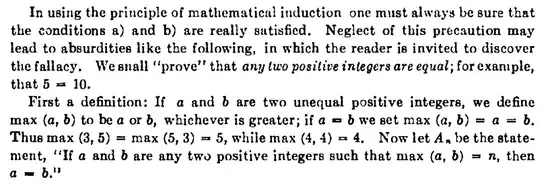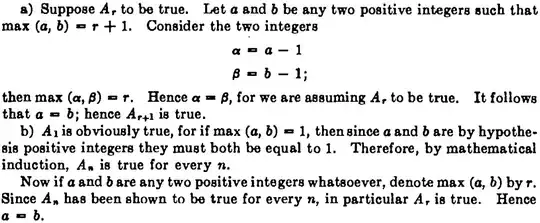I've been reading Courant/Robbins' "What is Mathematics?"
The first time they mentions $a),b)$ is here:
In another section of the book, he points out there is an alternative formulation:
Now here:
I don't see what is the fallacy here: He showed that $A_1$ is true, that is: He showed that $b)$ is true. But when trying to show that $a)$ is true, it seems he did a weird thing in there that looks like $a)$ but isn't? It's not clear to me. Can you help?



